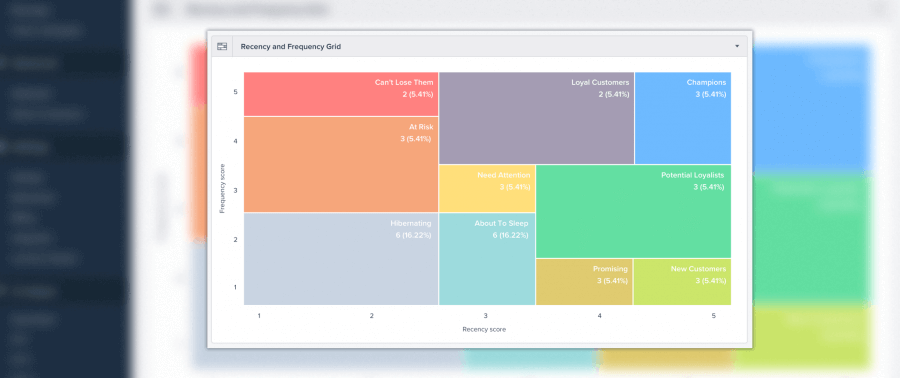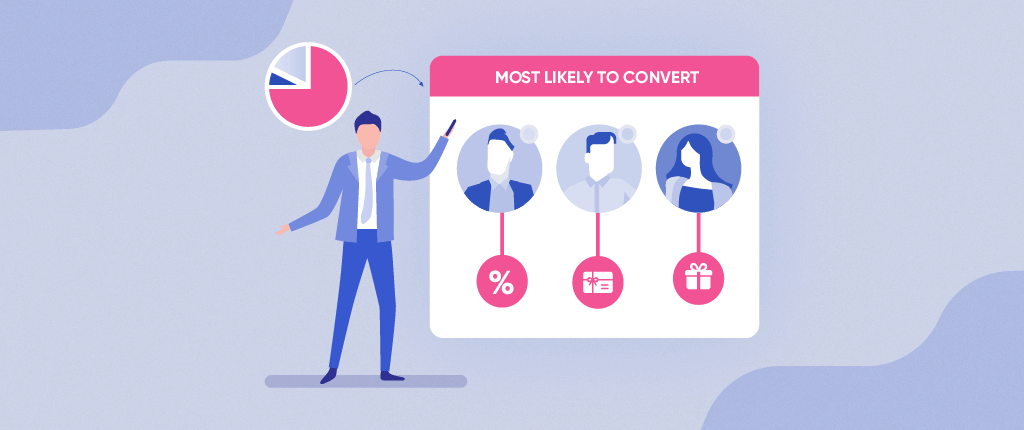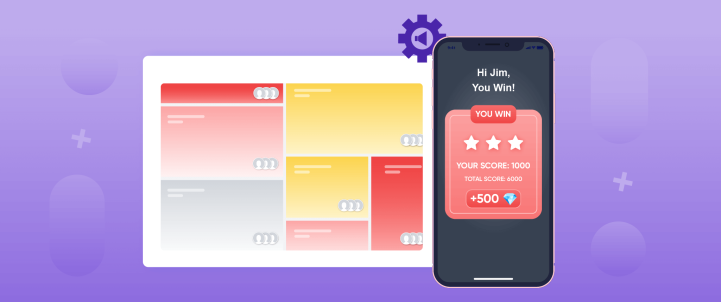Whether we’re waiting for a train, taking a break at work, or just killing time, there’s a good chance we’re playing a mobile game. With this increasing popularity in mobile gaming, competition among apps has become increasingly fierce. Another industry that thrives on that kind of competition is ecommerce. So, what can ecommerce teach gaming?
Gaming apps and ecommerce apps share a lot of similarities when it comes to marketing strategies. In particular, gaming apps can learn a lot from ecommerce apps in terms of RFM analysis, personalization, segmentation, and the ‘special sauce’ that makes it all easy and efficient — marketing automation.
Read on to discover some ways that you can level up your marketing game (pun intended) with tips from successful global ecommerce apps.
RFM Analysis: Whom Should You Target and How

RFM analysis stands for recency, frequency, and monetization. It’s a fancy way of saying “who’s been using our app the most and spending the most money?”
RFM in e-commerce is not new. Ecommerce apps have long been using RFM analysis to identify their most valuable customers and create strategies to retain them. Gaming apps can do the same by analyzing user data to identify their most engaged users and create personalized rewards or incentives to keep them coming back again and again. It’s like creating a VIP lounge for your most loyal users, but without the velvet ropes or bouncers.
Your most valuable players are of course your ‘whales’ — your biggest spenders — and you should absolutely keep the spark alive with loyalty offers so they continue to spend on your app. ‘Dolphins’ and ‘minnows’ spend less but still need attention and encouragement. Of course, your hibernating or at-risk players should also be targeted, just with different incentives. In each case, you need to know a player’s progress in your app to send the right kind of content to them.
Mobile game developer King uses RFM analysis to segment Candy Crush players based on their in-game behavior, such as the levels they’ve completed and how much they’ve spent on in-app purchases. By analyzing this data, the King team can then target specific player segments with customized promotions or in-game experiences, which increases player engagement and revenue.
Amazon is always a great example of a company that uses RFM analysis to optimize its monetization strategies and to personalize the customer experience through its “Customers who bought this also bought” feature. Why not try creating a “Players are also enjoying this game” promotion by targeting players to play a new game within the same category as the one they’ve been enjoying?
By knowing what games your players are playing and what they’re spending money on, you can recommend related games. Your users will appreciate the personalized and relevant recommendation!
Tailored and Targeting Experiences With Personalization
We all like to feel special. Ecommerce apps have been making their customers feel special using personalization for years, creating a tailored shopping experience. Gaming apps can do the same by analyzing user data to personalize the game experience.
For example, a user who’s struggling with a certain level might benefit from a personalized tip or a power-up that’s tailored to their playing style. Similarly, allowing users to customize their in-game avatar or game environment can create a sense of ownership and investment in the game. It’s like having a virtual pet that you get to dress up and make your own.
Anything you send to your players can be personalized. Whether it’s a push notification, the content and imagery in an email, or an offer to keep them engaged, understanding the player’s level of interest in your app and their own preferences should help create the kinds of messaging that will engage them and make them feel special and understood.
Segmentation Draws Them Back

Just like in ecommerce, gaming app users come in all shapes and sizes. Some users are newbies who need a gentle nudge to keep playing, while others are hardcore players who live and breathe the game — and segmentation is a way to keep all these different kinds of players engaged.
For example, a casual gamer who’s only played a few times might benefit from a tutorial or a free power-up, while a seasoned player might appreciate a more challenging level. By catering to different user groups, gaming apps can create a more personalized and enjoyable experience for everyone and increase engagement.
Marketing Automation Makes It Happen
We get it, managing and marketing a gaming app can be overwhelming. You’ve got users to engage, features to update, bugs to fix, and KPI reports to submit. Who has time for marketing? That’s where marketing automation comes in. Ecommerce apps have been using marketing automation for years to create targeted campaigns and automate repetitive tasks.
For gaming apps, this can mean scheduling push notifications for users who haven’t logged in for a while or triggering personalized in-game messages based on user behavior. With marketing automation, gaming app developers can focus on what they do best: making awesome games that people love.
Taking a Lead From Ecommerce
Taken together, these four tactics — RFM analysis, personalization, segmentation, and marketing automation — are the tried and true ways to keep your customers happy and playing. And they should absolutely be the workhorse of your marketing strategy.
By focusing on high-value users and personalizing the user experience, you’ll create a more loyal and profitable user base while also nurturing the laggards along. And by studying successful companies in both industries, you’ll gain insights into best practices that you can apply to your own app.
And while you’re studying, why don’t you check out CleverTap — the only solution that supports real-time understanding of players’ actions and integrates lifecycle marketing. We also enable LiveOps and remote configuration for a truly holistic and fantastic player experience. Request a demo and see for yourself how we can help your app win the grandest prize of all: happy and engaged users.

Subharun Mukherjee 
Heads Cross-Functional Marketing.Expert in SaaS Product Marketing, CX & GTM strategies.
Free Customer Engagement Guides
Join our newsletter for actionable tips and proven strategies to grow your business and engage your customers.















































